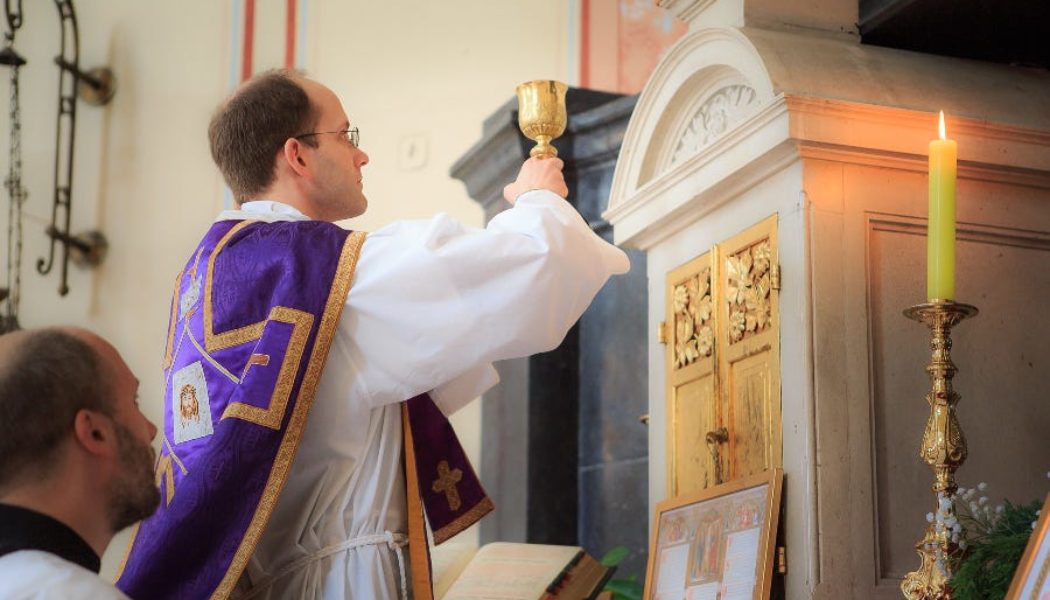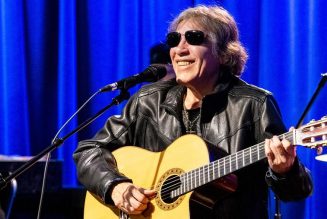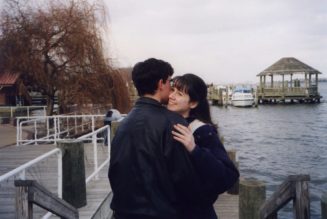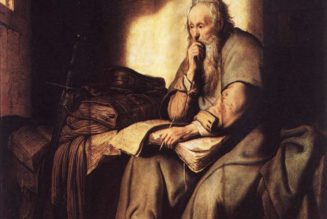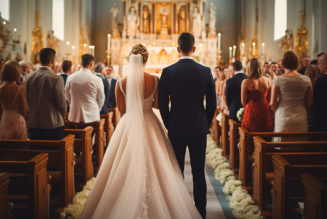Since it was announced, critics of the National Eucharistic Congress have expressed concern that the July event, which coincides with the Republican National Convention, would be co-opted by politics.
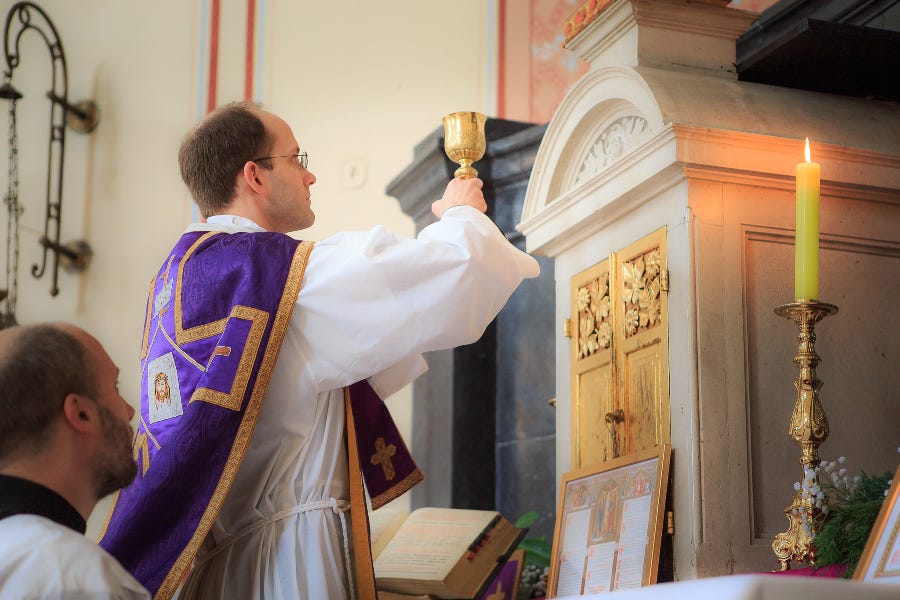
Some have speculated that Congress talks will take on a partisan tone, or that some speakers will advocate for conservative political engagement. Others have lamented the inevitable comparisons that will be raised between the two national gatherings in late July — the Catholics in Indianapolis, and the Republicans in Milwaukee.
Organizers of the Congress, for their part, have made efforts to avoid political entanglement at their gathering.
And the Eucharistic pilgrimages preceding the Congress — which have drawn many more Catholics than were initially predicted — have not seemed to attract overt political demonstrators.
But while the Congress is making efforts to avoid secular politics, there is one political dynamic it can’t avoid.
Like any large contemporary Catholic gathering, the Eucharistic Congress and its organizers face the challenge of grappling with the contentious and fraught third rail of modern ecclesiastical life: the politics of liturgy.
Congress organizers aim to encourage and inspire Catholics to regard the Eucharistic liturgy as the true “source and summit” of their own lives. But every liturgical decision they make will likely have implications to the attendees of the Congress, to the bishops organizing, to Catholics across the country, and to the Holy See.
And when it comes to discerning how best to approach the Extraordinary Form of the Liturgy — the Mass offered according to the 1962 rubrics that preceded the Second Vatican Council — the Congress organizers face the prospect of challenges, and criticism, from all sides.
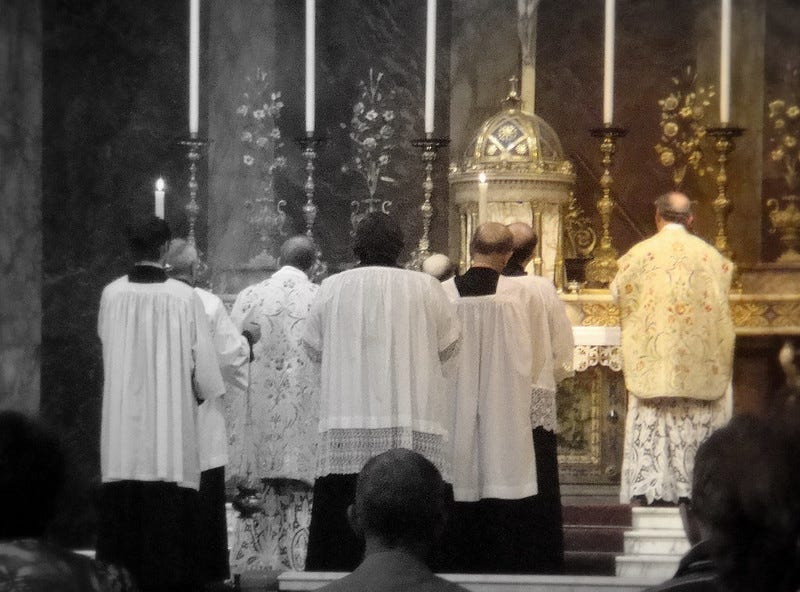
—
After its opening ceremonies July 17, the Eucharistic Congress will take on a daily schedule familiar to Catholics who have attended large Catholic gatherings, including World Youth Day.
An English-language Mass will be offered each morning in Lucas Oil Stadium, and other liturgies will be offered at the same time, in other large gathering places, one in Spanish, and one following the Congress’ “Youth Track.”
Each day, there will be “breakout” and “impact” sessions, exhibitors and displays, catecheses, adoration, and confessions — lots of confession will be available at Congress sites.
And on two Congress afternoons, there will be additional Masses organized by the Congress, and held in convention center spaces, or local parishes.
According to a liturgy schedule sent by organizers to The Pillar, two of those Masses will be offered according to the 1962 Roman Missal — “Traditional Latin Masses.”
One of these will be offered by Archbishop Salvatore Cordileone and the other offered by an Indianapolis priest, the pastor of the personal parish where the Masses will be held, about a mile from Lucas Oil Stadium — and where Traditional Latin Masses are regularly held, with permission of Archbishop Charles Thompson.
To observers of all ecclesiastical stripes, the very existence of those Masses might come as a surprise.
Since the Congress was announced, some traditionalist Catholics have expressed worry, and expectation, that there would be no TLM offered during the Congress, especially in light of the restrictions placed on older liturgical rubrics by Traditionis custodes.
And bishops who have imposed strong restrictions on TLMs in their own dioceses, urging since Traditionis custodes that Eucharistic unity means consistent celebration of the post-conciliar liturgical rubrics, might also be surprised that TLMs have been scheduled, with some likely to wonder how that will be perceived by the Vatican.
Sources close to the Congress have told The Pillar that organizers wanted to see the Extraordinary Form of the Mass offered out of genuine pastoral concern for Catholics who worship according to older rubrics — and in recognition of their presence in the Church. Sources tell The Pillar the decision was pastoral, not political.
But organizers are likely aware that scheduling TLMs during the Congress would come with challenges.
In light of the liturgical controversies of recent years, it seems reasonable to expect that some bishops will blanch at the idea that TLMs are being offered at all, and raise concern about it to Bishop Andrew Cozzens, chair of the event, or to Archbishop Thompson, ecclesiastical host to the entire affair.
At the same time, it seems likely that traditionalist Catholics, often eager after Traditionis custodes to demonstrate the vitality of their movement among young people and families, will encourage heavy attendance at the Eucharistic Congress’ TLM liturgies, with hopes that their presence will convey to American bishops, and even to the Holy See, that a share of practicing Catholics have interest in older liturgies, and want to attend them.
Attendance is especially likely to be boosted because of rumors — which The Pillar has not verified — spreading through traditionalist communities around the world, which suggest that the Vatican will impose new restrictions on the Traditional Latin Mass on July 19, the same day as one of the officially scheduled Congress TLMs.
But the church where the TLMs in Indianapolis are scheduled, built by Italian immigrants, fits only 400 people, making it among the smaller liturgical venues in use at the Congress.
While the Congress reportedly plans to install a tent outside the church for extra seating, if more than 400 Catholics show up to the liturgies, it’s not clear exactly how they might react to the prospect of not getting a seat inside.
Some, of course, might choose to make use of overflow seating, to pray the rosary outside the church, or even to attend the other scheduled liturgies of the Eucharistic Congress.
But it’s also possible that some, especially those traditionalist Catholics who’ve suggested the Eucharistic Congress won’t support them, might raise their own objections — arguing that scheduling the TLM in a relatively small church was unrealistic, or didn’t sufficiently appreciate the number of Catholics who would show up, or was even done deliberately, with an eye on downplaying the usus antiquior at the Congress.
In some ways, the Congress organizers have faced a damned-if-you-do, damned-if-you-don’t scenario: No matter what they do with regard to the TLM Masses, they’re likely going to make some group unhappy, and vocal.
—
Of course, most bishops who attend the Congress will likely have little to say about the scheduled TLMs, if anything. And most traditionalist Catholics who show up to the scheduled Masses will likely express gratitude for the opportunity to participate in the Eucharistic Congress according to the liturgical rubrics which they experience positively.
But whatever they do to welcome TLM-attending Catholics, Congress officials can almost certainly expect to face a host of criticisms from the organizers of an alternative event, the “Traditional Eucharistic Revival,” which will be held on July 19.
Sponsored by LifeSite News, the event will be at a park about a half mile from Lucas Oil Stadium. It will include speeches from Wisconsin priest Fr. James Altman, whose ministry has been restricted by his bishop, along with Illinois priest Fr. Jeffrey Fasching, who advertises himself as a “canceled” cleric. The event has also advertised the attendance of a “special guest” — widely speculated to be Bishop Joseph Strickland, formerly of Tyler, Texas.
While promotional material for the event says it will be an experience of “unity,” at which participants “join in spirit with the Congress,” the presence of provocative and persistent critics of U.S. bishops and Pope Francis — like Altman, who has claimed Francis is not actually the pontiff — suggests that the rhetoric of the event may not actually embody a spirit of unity.
If organizers of that rival event were serious about a aiming for unity with the Congress, they could consider replacing speakers like Atlman with adherents of the Traditional Latin Mass who avoid incendiary and divisive speech — or at least choosing clerics not subject to official restrictions on their ministry.
And they could encourage Catholics planning to gather in the park for catechesis and fellowship to conclude their day by attending the officially organized Congress TLM, rather than the alternative Mass on their schedule.
For their part, if the organizers of the Congress prefer that Catholics attend the event itself, rather than the alternative gathering, their best course of action would likely be ensuring that official Congress TLMs are celebrated in places that can accommodate as many people as possible.
Even so, it’s unlikely that doing so would tamp down some of the inflammatory rhetoric at the alternative event — which seems certain to include sharp criticism of the bishops and pontiff, and certain to argue that the Congress didn’t do enough to include traditionalist Catholics.
And whatever their intentions, if Congress organizers were to move the TLMs to a larger or more prominent venue, and to emphasize a welcome to traditionalist Catholics who attend the Congress, they would be met with more opposition from the set of American bishops most critical of the Congress already, and possibly face pressure to take those Masses off the schedule. They could also spur questions from apostolic nuncio Christophe Pierre about the choice to include the Extraordinary Form at all.
In the final weeks before the Congress begins, the TLM is proving to be a difficult needle to thread for event organizers, forcing them to strike a delicate balance between various ecclesial factions invested in the use of the Extraordinary Form, whether for or against.
And with a TLM group set to compete with the Congress through an alternative event, the Traditional Latin Mass has become the Congress’ third rail of ecclesiastical politics.
Comments 88
Services Marketplace – Listings, Bookings & Reviews
